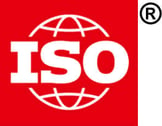Most OEMs rely on in-house mechanical engineers to create their product designs and specifications. The concern with these engineers is that most were not exposed to the up-and-coming field of powder metallurgy in college. This lack of knowledge regarding the benefits of powder metallurgy over traditional metal forming technologies can limit available production options and result in unnecessarily higher costs.
As part of its goal to create uniform guidelines within the powder metal industry, the Metal Powder Industries Federation (MPIF) has created several committees responsible for developing standards within their area of expertise and proposing them to the MPIF membership. Using these standards is voluntary, but you shouldn’t ignore this opportunity to better understand powder metal:
-
Technology
-
Materials
-
Properties
-
Capabilities
Following MPIF standards can help both new and veteran engineers become more familiar with powder metal’s astounding potential.
What Are the MPIF Standards?
The Metal Powder Industries Federation is a voluntary-membership, not-for-profit trade association formed by the members of the powder metal and particulate materials industries. Its mission is to promote the advancement of the metal powder producing and consuming industries and the practice of powder metallurgy and particulate materials technologies.
MPIF standards fall under three basic classifications:
1. Materials Specifications for Components
The MPIF continually updates its Standard 35 – Materials Standards for PM Structural Parts (most recently in 2018). This is a must-have document that provides the design and materials engineer with the latest engineering property data and information available. It makes specifying materials for structural powder metal parts that much easier, especially for newcomers to powder metal (PM).
This guide does not apply to to all powder metal materials. There are separate MPIF guides for:
-
Metal injection molding (MIM)
-
Self-lubricating bearings (SLB)
-
Powder forged (PF) materials
2. Methods of Test (for Powders and Components)
The Standard Test Methods for Metal Powders and Powder Metallurgy Products has been developed to guide powder metallurgy’s customers and suppliers. The current edition contains 42 standards that cover terminology and methods of test for:
-
Metal powders
-
Powder metal parts
-
Metal injection molded parts
-
Powder metallurgy equipment
-
Metallic filters
3. Powder Metallurgy Press Safety Standards
The American National Standard for Machine Tools—Metal Powder Compacting Presses: Safety Requirements for Construction Care and Use was developed to eliminate workplace injuries associated with presses used in powder metallurgy. These standards establish safety requirements for the construction, care and use of powder metal presses.
The Value of MPIF Standards
Every project has a certain performance criteria that is priority #1. MPIF gives designers a good baseline of the mechanical, magnetic, and other properties possible with your design.
It’s key that the PM industry has standards that designers can turn to for the knowledge and support they need. Standards are in place to provide them with expectations on properties such as strength and hardness, and details they need to be concerned about when designing for a manufacturable powder metal part.
Without standardized industry information, designers are forced to rely on each individual powder metal parts supplier to supply this critical information.
Designers and engineers can look at the MPIF standards and see what to do and not do. Increased education means you can unlock more useful mechanical properties and streamline costs -- and isn’t that what attracted you to powder metallurgy in the first place?
Taking Your Knowledge (& Your Design) to Your Powder Metal Manufacturer
With newfound knowledge on materials in hand, how a designer decides to finish a product depends on discussions with the powder metal parts manufacturer.
MPIF Global Database
The Global Database on the MPIF website is a helpful tool for powder metal newcomers, too. It allows potential customers to simply enter in properties that they’re looking for, and the database will recommend Standard 35 materials. So if you need, for example, a tensile strength of 100,000, it will spit out appropriate options. It can also give you density requirements and other attributes -- it’s quite well-designed.
Advanced PM Parts Manufacturers
Some of the more advanced PM parts makers can do things a bit differently, offering shaping and performance advantages not available with conventional powder metallurgy and sintering. In other words, you’re not bound to the MPIF Standard 35 powders for life -- it’s possible to take your product to a whole new level if you step outside that box.
Advanced materials exist that are tailor-made for electromagnetic applications, consolidated assemblies, and more. The availability of this next-level manufacturing depends on your supplier -- some advanced PM parts makers use mixes uncommon elsewhere in the industry or entirely exclusive to them!
A qualified components supplier can help create a bridge between which tools you want to which materials you need.
These are secrets for another time -- check out our blog for more! Or, to start learning about the design possibilities of soft magnetic composite materials, click below to visit our Resource Center:



